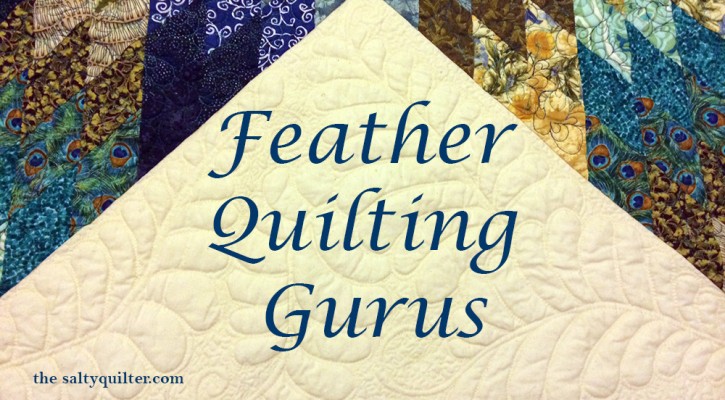
Feather Quilting Gurus
November 23, 2015
I have the privilege of presenting how to draw feathers for free motion quilting at this week’s meeting of the Canberra Modern Quilt Guild.
Over the years, I’ve tried several different methods of both drawing and quilting feathers, and this was heavily influenced by a few particular quilters. I highly recommend checking out their books and blogs if you want to learn more about how to quilt feathers, and for inspiration in general.
Harriet Hargrave
Harriet is one of the pioneers of domestic machine quilting. While she has a very traditional style, her lessons apply to all sorts of machine quilting including feathers.
Her seminal book on the subject Heirloom Machine Quilting: A Comprehensive Guide to Hand-Quilting Effects Using Your Sewing Machine is a must have for any serious quilter, especially if you are like me and love details. Harriet covers pretty much everything you need to know. Even if you are an experienced machine quilter, you should still own this book as a reference.
In it, Harriet covers feather basics, adapting traditional hand quilting designs and techniques into machine quilting, including the “bump back” or “bump bump” method of feather quilting.
She throws down the gauntlet with the ultimate challenge: when backtracking over a previous stitching line, the needle should go into the same holes as the previous line. That shit is HARD CORE!
Diane Gaudynski
Diane is another pioneer of domestic machine quilting, and feathers are her specialty. For me, Diane’s feathers take on an elegance that I have not seen matched by other quilters.
Her feathers are created by forming each feather shape separately, with a teeny gap in between (aiming for 1/8″) and then echoing around the outside to unify the shapes. She covers the method in her book Quilt Savvy: Gaudynski’s Machine Quilting Guidebook. Diane provides some additional feather tips on her blog here.
I’m a big fan of Diane’s method because you don’t have to backtrack over your shapes, eliminating thread build up issues. I used her method on my Star of India quilt to draw/quilt the feathers in the setting triangles of the lone star.
She also extensively covers how to frame your feathers with background fills of various types. This is important as the right fill can make your feathers pop, while the wrong fill can make them disappear into the background.
Wendy Sheppard
Wendy is an incredibly talented quilt designer and machine quilter and the force behind the Ivory Spring blog. Wendy’s quilts perfectly bridge the gap between modern and traditional.
One of the things I love about Wendy is that you can always tell her quilts when you see them in magazines. They are impeccably finished with custom quilting, and not pounded into submission with the dreaded all over meander *shudder*.
When I first started trying to quilt feathers, Wendy’s series Thread Talk from my Sewing Machine provided practical tips, tricks and designs for lots of different kinds of quilting including feathers.
One of her designs that really caught my eye was her pseudo-feathers. Posted as a way to practice making feather shapes, I modified these feathers to stretch down and touch the previous feather shape instead of curling around.
In effect, it combines the simple shape of Wendy’s feathers with the individual feather shape creation and echoing from Diane’s feathers. I like to call them self-echoing feathers.
I found these feathers were quick and easy to quilt and still give the elegant shape of more difficult feathers. I’ve adapted this as my own personal preferred feather style. I first used them for my Modern Wedding Ring quilt.
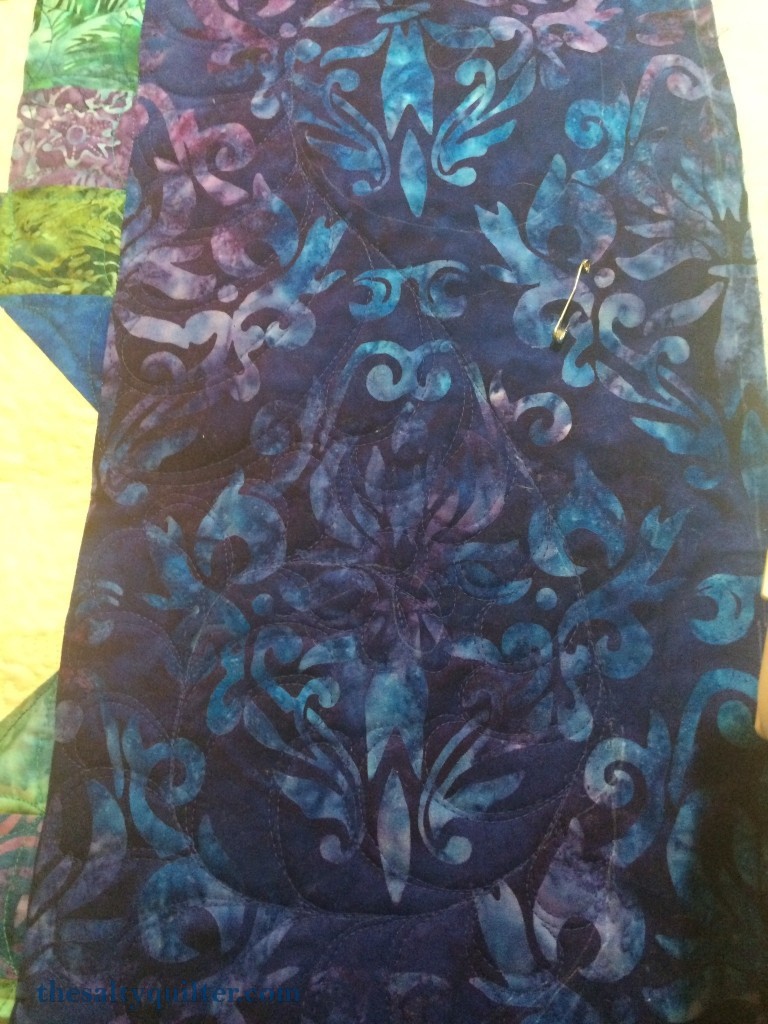
Final quilting on the border. I learned an important lesson here – matching thread can blend TOO well. I should have used something that would make the feathers show up better.
Angela Walters
Angela is one of the best known modern machine quilters on the scene today. Her blog Quilting is My Therapy is fantastic inspiration for blending the traditional look of feathers into very modern quilts.
Angela also has several books published with her various quilting designs. I’m proud to say I own all of them as they are continually useful resources when I have to figure out the answer to “how am I going to quilt this?” (note that feathers are rarely the wrong answer to this question).
I first saw Angela’s feathers in an issue of Machine Quilting Unlimited. I really loved how she made the feathers look like they “disappeared” behind a block.
I adapted this method in my Forest in the Fog quilt. I also used some of Diane’s fills to make the feathers really pop out.
Do you have a preferred method for quilting feathers? Who is your feather guru? Let me know in the comments.
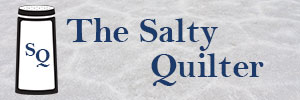
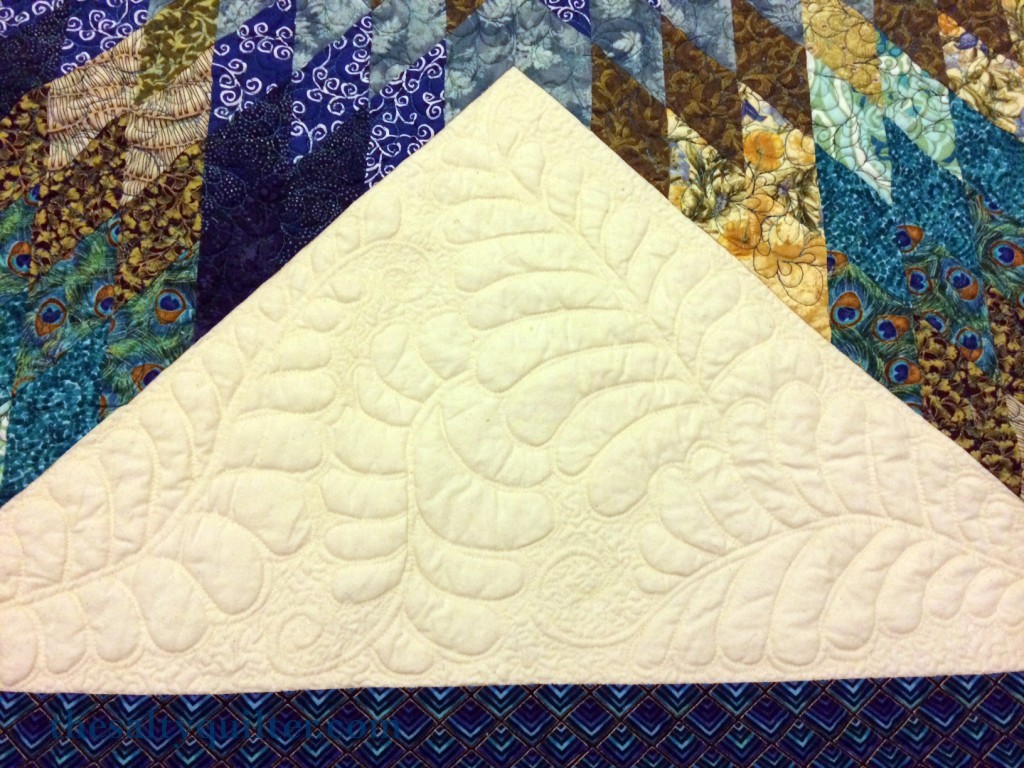
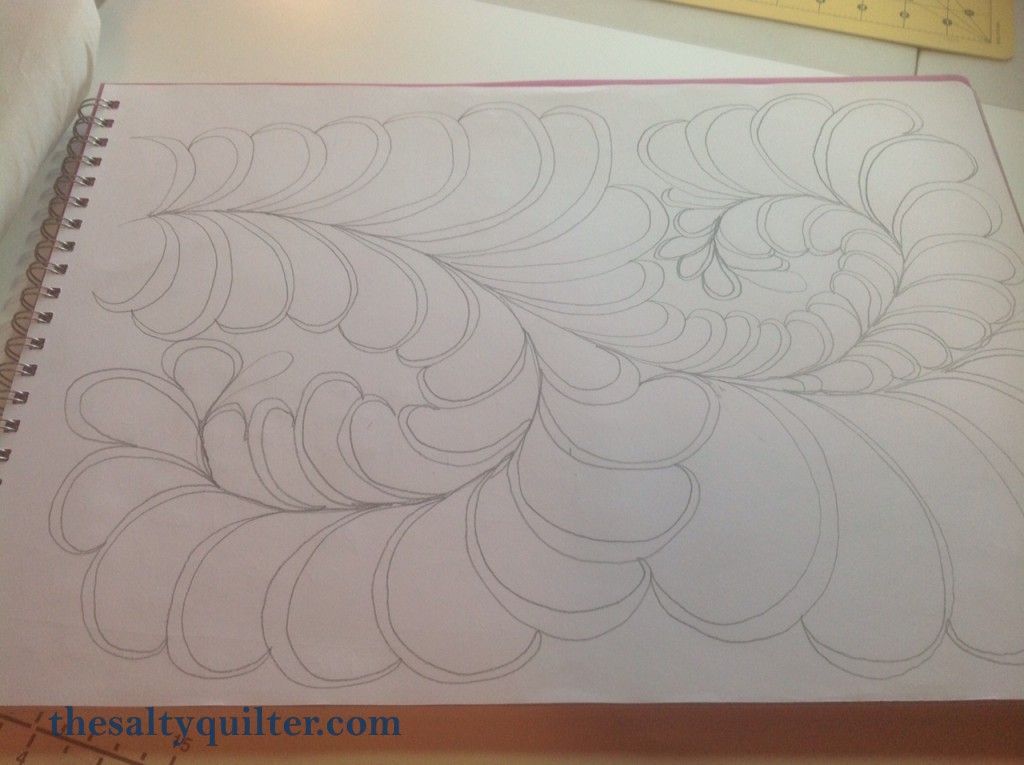
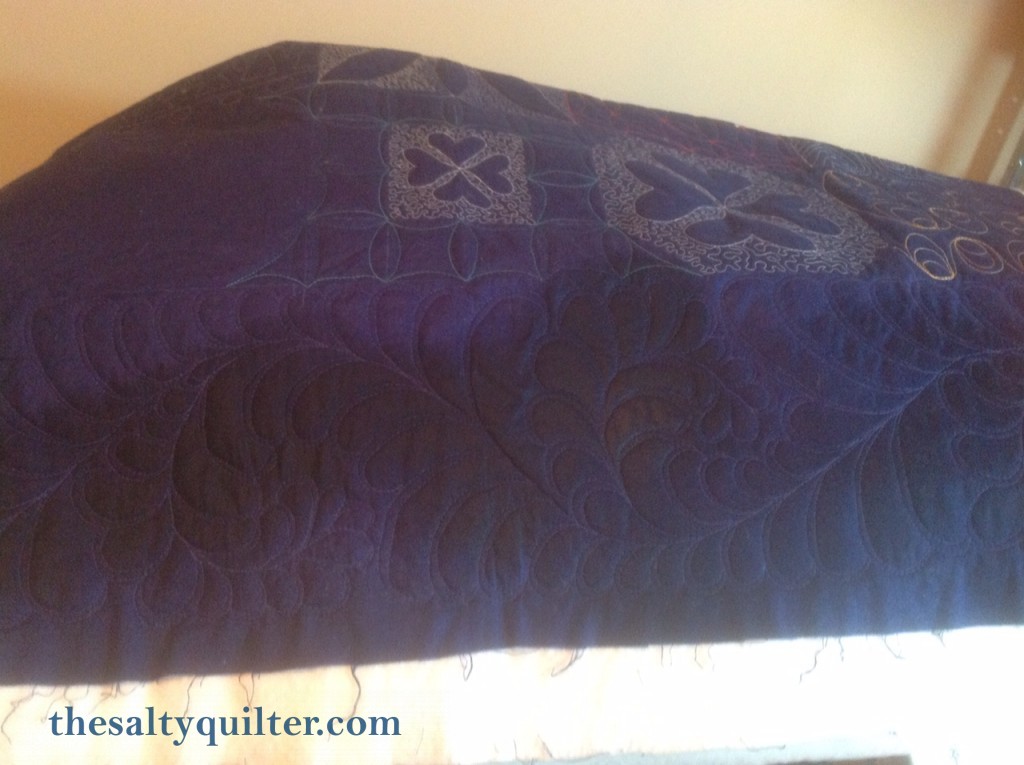
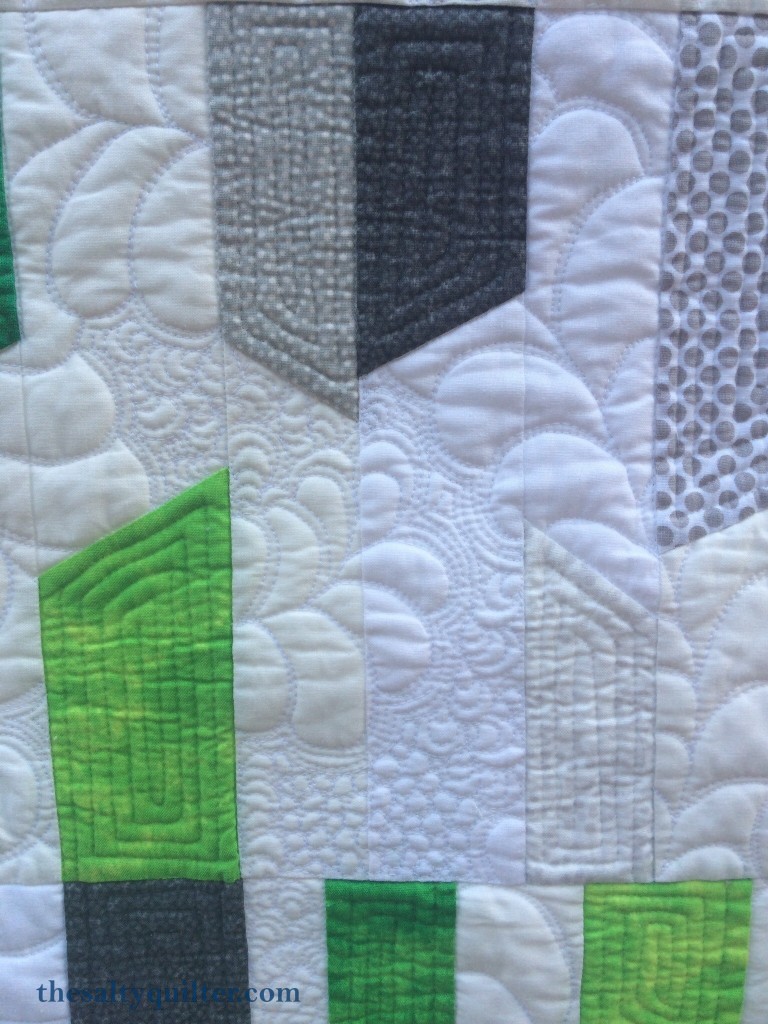





Pingback: Episode 179: Let's Play! - The Off-Kilter Quilt